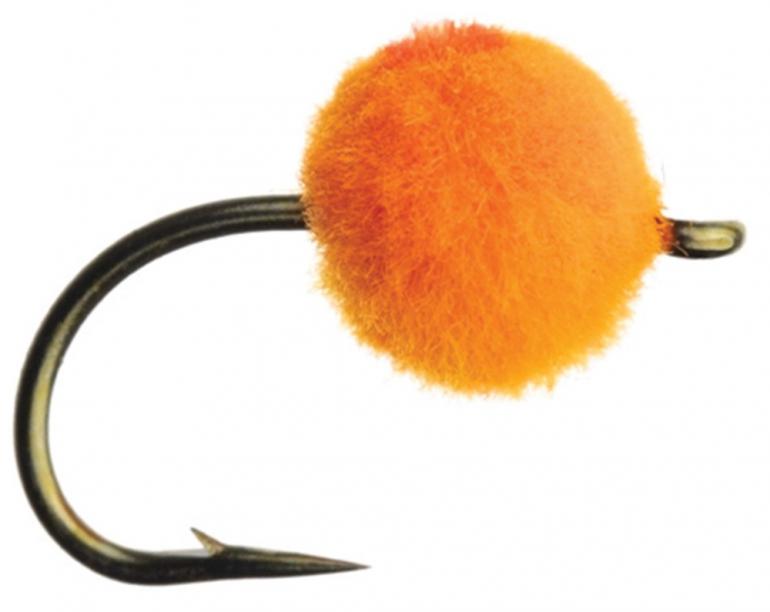Eggistential Crisis
Confessions of a proud egg fisherman.
Oh, the many controversies of fly fishing: Tenkara rods, Euro-nymphing, felt-soled boots, tippet rings, and of course... egg flies. Everyone knows, or at least ought to know, how effective these pink, yellow, and orange puffballs are at catching fish during spawning season. They are ridiculously easy to tie, straightforward to fish with, and extremely productive. While fishing with them may be a bit of a dirty trick—few trout can resist them—does it constitute cheating? Some folks say so, or at least declare that the practice is akin to bait fishing. Chins held high, they sneer at “egg fisherman” as if they are tainting the sacred sport of fly fishing. Admittedly, by no measurement does this easy and reliable method come close to throwing dry flies, which is the pinnacle of trout fishing. Matching the exact bug on the surface of the water will always be the utmost challenge, but is it the only way to fly fish?
Some anglers will shake their Winston rods in dismay at anyone who dares throw an egg pattern. Among the entire hierarchy of gear, style, and fashion, the fly you choose is the most often-scrutinized aspect of the sport. Mayflies, caddis, stoneflies, midges, and terrestrial bugs are all permitted to be imitated in order to catch trout. However, the “trash flies” that do not conform to the noble insect species of the West are not. Typically, these junk flies are easy to tie, cheap, and very effective—which goes directly against the standard narrative of fly fishing: expensive and complicated. Everyone has their own personal opinions of what flies they consider “trash flies,” but with springtime comes eggs, and many people disapprove of these spheres of fluff. Nothing more than synthetic fiber attached to a hook, these innocent “flies” are extremely useful for catching trout, as an abundance of eggs flow through streams from spawning fish. Any egg that gets washed downstream will not develop, and trout of all species enthusiastically gobble up this available food source.
I personally can’t think of a better way to spend a cold, windy day in April than nymphing egg patterns for eager trout, which are more than ready to gorge after a harsh winter of minimal food. Fishing during the spawning months comes with responsibility, though. Make sure you do not walk on, or fish near, redds, which are the light-colored gravel patches in shallow water where rainbow trout spawn and lay eggs. Fortunately, this time of year, plenty of fish will still be stacked up in deeper holes and can be more ethically targeted. Especially the browns, who will no doubt be taking full advantage of the protein surplus floating by.
Whether you deem it acceptable, or your moral superiority insists on casting #22 midges, egg fishing works and it’s not going anywhere. Maybe someday Kelly Galloup will tie up an articulated egg pattern with an erotic name and it will suddenly become cool. Until then, fish those eggs proudly, and if you’re curious about coming to the dark side, buy a couple orange glo-bugs (be sure to pinch the barbs) and enjoy the action. Don’t worry about what your friends will say, it’s still cooler than Tenkara fishing.



























